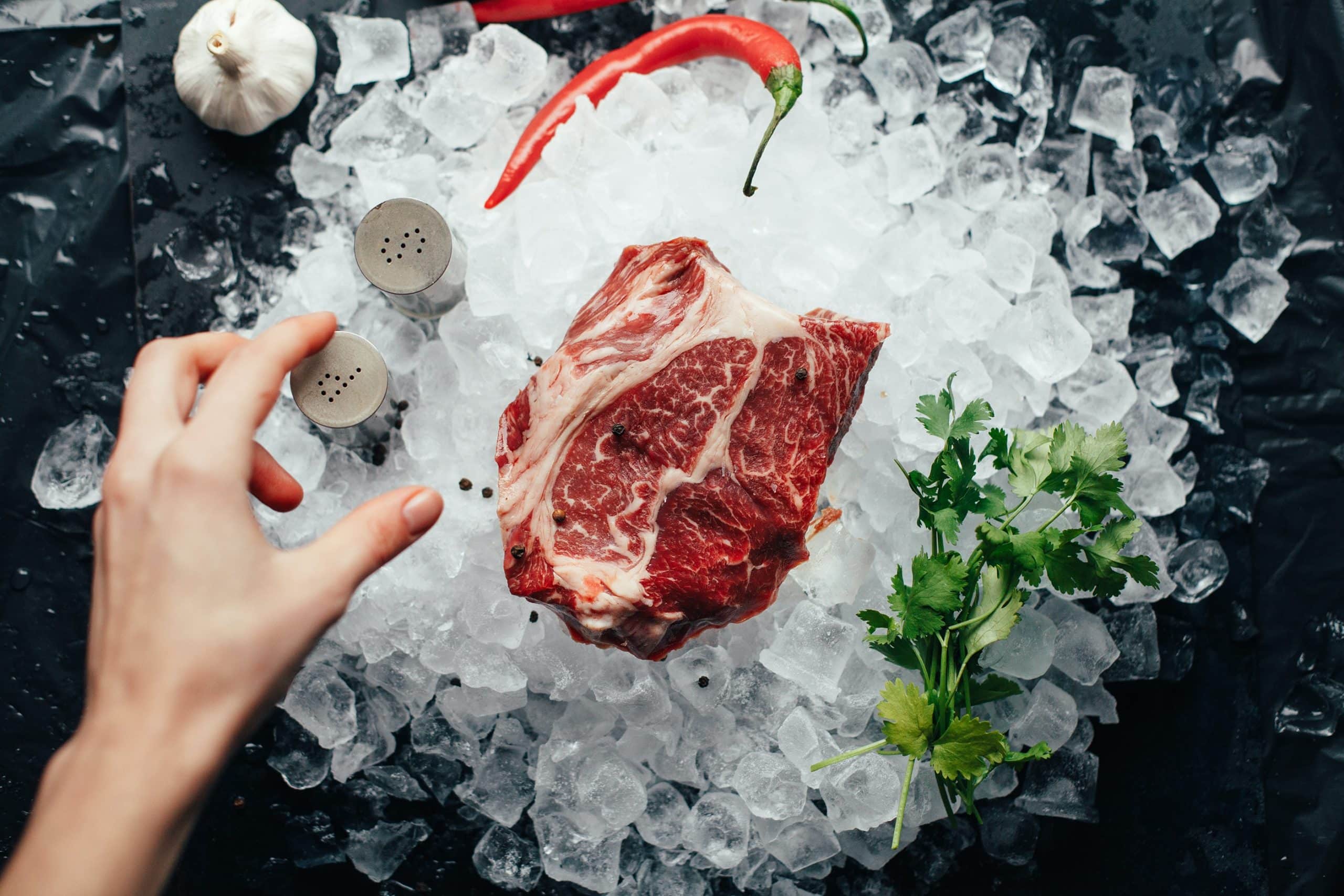What are the best techniques for searing meat?

When it comes to cooking a perfect piece of steak, the technique is everything. We’ve all had those moments when we’ve cooked a steak but it didn’t turn out as we imagined. It can be too tough or too dry, or maybe it lacked that beautiful, appetizing sear that you see in restaurants. Searing meat is an art that requires precision, patience, and practice. In this article, we will guide you through the best techniques to sear your steak, ensuring a restaurant-quality result every time.
Pan-Searing: An All-Time Classic
Pan-searing is one of the most traditional methods of cooking steak and is renowned for its ability to produce a consistent, delicious result. In this method, the steak is cooked at a high temperature in a pan to create a crisp, caramelized crust.
Lire également : What’s the best way to cook with fresh herbs?
To pan-sear a steak, start by patting it dry with a paper towel and seasoning it with salt and pepper. Heat a pan on high until it’s almost smoking, then add a small amount of oil. The oil should be just enough to coat the pan and prevent the steak from sticking. Once the oil is shimmered, add the steak.
It’s crucial not to move the steak for the first few minutes while it’s creating a crust. After about 3-5 minutes, flip the steak and allow it to cook on the other side. The exact cooking time will vary depending on the thickness of the steak and your desired level of doneness.
Cela peut vous intéresser : The ultimate guide to plant-based proteins
Reverse-Searing: The Contemporary Approach
Reverse-searing is a modern method that has risen in popularity in recent years due to its ability to cook a steak perfectly from edge to edge. In this method, the steak is first cooked at a low temperature in the oven and then finished off with a high-heat sear in a pan.
To reverse-sear a steak, preheat your oven to a low temperature, around 135°C (275°F). Place your seasoned steak on a wire rack on a baking sheet and cook it in the oven until it reaches an internal temperature of about 52°C (125°F) for a medium-rare steak. This process will take about 45 minutes to an hour.
After removing the steak from the oven, let it rest for a few minutes. Meanwhile, heat a pan on high until it’s smoking hot, then add a little oil. Sear the steak for just a minute or so on each side, just long enough to form a golden-brown crust.
Searing Under High Heat
Searing under high heat is another effective method of cooking steak. This technique is all about exposing the steak to a very high temperature for a short amount of time. The high heat quickly caramelizes the surface of the steak, creating a beautiful crust, while the inside remains juicy and tender.
To sear under high heat, you need a cast-iron skillet or a grill. Preheat your cooking surface until it’s smoking hot, then add your seasoned steak. Cook the steak for about 2 minutes on each side, or until a deep brown crust has formed. The interior of the steak should still be slightly cooler than the surface, ensuring a delicious contrast of textures and flavors.
The Importance of Resting Time
One essential element often overlooked in the process of searing steak is the resting time. This is the interval after cooking when the steak is allowed to sit undisturbed, usually covered in foil. The resting time allows the juices to redistribute throughout the steak, leading to a more flavorful and juicy meat.
The recommended resting time for steak is about five to ten minutes. During this time, the internal temperature of the steak will continue to rise slightly, cooking the steak a bit further. This is also a good time to add any finishing touches, like a pat of butter or a sprinkle of fresh herbs.
Creating a Flavorful Crust
One of the main aims of searing is to create a flavorful crust on the outside of the steak. This crust is formed by the Maillard reaction, a complicated chemical reaction that occurs when proteins and sugars in the meat are exposed to high heat. The result is a rich, savory crust that adds a delicious complexity to the steak.
To create a flavorful crust, make sure your steak is thoroughly dried before cooking. Any moisture on the surface of the steak will hinder the Maillard reaction. Also, ensure your pan or grill is very hot before adding the steak. Lastly, resist the temptation to move the steak around in the pan while it’s searing. Leaving it in one place allows the crust to form uninterrupted.
Remember, a well-seared steak is about more than just looks – it’s a delicious, mouth-watering experience that is well worth the time and effort. So, grab your favorite cut of meat, heat up that pan, and start searing. You’ll soon find that a perfectly seared steak is a culinary achievement that’s truly within your reach.
Sous Vide: Precision Cooking for a Perfect Medium Rare Steak
Sous vide, a French term meaning "under vacuum", is a technique that offers precision cooking for your meat. It’s another fantastic way to achieve a medium rare steak, especially if you’re among those who appreciate a steak that’s evenly cooked from edge to edge. This method requires the steak to be vacuum-sealed in a plastic bag and cooked in a water bath at a precise temperature. This ensures that the steak cooks evenly, and also retains its juices, yielding a tender and juicy piece of meat.
To cook a steak sous vide, season your steak generously with salt and pepper, then place it in a vacuum-sealed bag. Set your sous vide precision cooker to the desired final temperature (for a medium rare steak, this would be approximately 55°C or 130°F), and place the bag in the water bath. Cook for about 1-2 hours.
The sous vide method is all about precision, so it’s recommended to use a thermometer to monitor the internal temperature of the steak. Once the steak has reached the desired internal temperature, remove it from the bag. The steak will look cooked but it won’t have that appetizing seared crust yet.
To finish off your sous vide steak, you need to sear it on high heat. Heat up a cast iron pan until it’s smoking hot, then add a small amount of oil. Sear the steak for about 1 minute on each side until a golden-brown crust forms. Remember to let the steak rest for a few minutes before serving.
The Perfect Pan for Searing Meat
The vessel you choose for searing meat can make a significant difference in the results. For the perfect pan-seared steak, a cast iron skillet is your best bet. Known for its excellent heat retention and even heat distribution, a cast iron pan can achieve the high temperatures needed to sear meat effectively.
A cast iron skillet heats up quickly, stays hot, and can withstand the high temperatures of your stove or grill. This makes it ideal for searing steak, as it creates a super hot surface for the steak to cook on, leading to a beautifully seared crust.
To use a cast iron skillet, heat it over high heat until it’s almost smoking. Then, add a small amount of oil and the seasoned steak. Cook the steak without moving it for about 3-5 minutes, allowing a crust to form. Flip the steak and cook for another 3-5 minutes, or until it reaches your desired level of doneness. Remember to let the steak rest for a bit after cooking to help redistribute the juices.
Conclusion
Regardless of the method you choose – be it pan-searing, reverse-searing, searing under high heat, or sous vide – the key to a perfect seared steak lies in your ability to control heat and time. These techniques, when executed properly, can all yield a steak with a beautifully crisp, caramelized crust and a juicy, tender interior that’s cooked to your preference, whether that’s rare, medium, or well done.
Understanding the importance of the Maillard reaction and the role of a hot pan in achieving that desired sear is crucial. Equally important is the resting time after the sear, which allows the juices to redistribute, making your steak flavorful and juicy.
With practice and patience, you can absolutely master these techniques to sear meat. The next time you’re up for a steak, remember these techniques and tips, select your preferred method, and get ready to enjoy a restaurant-quality steak right at home. Here’s to many more deliciously seared steaks in your future!
